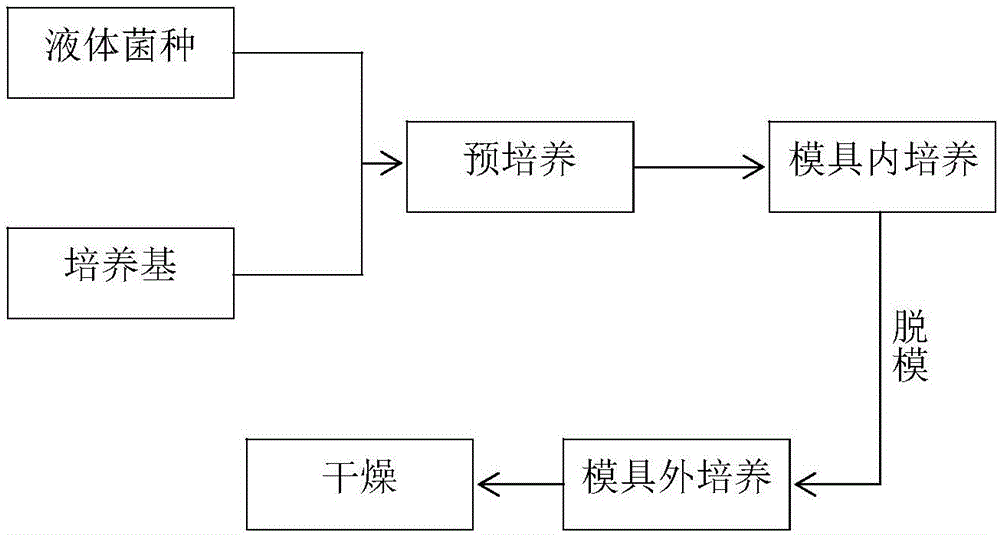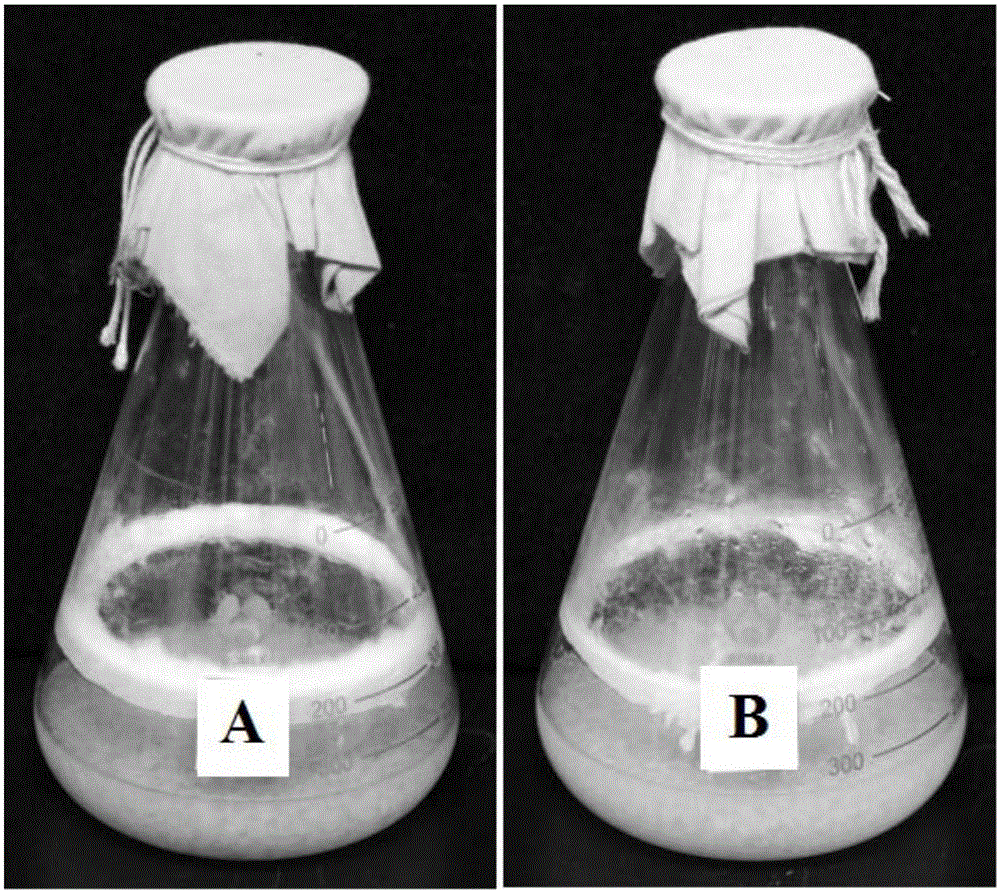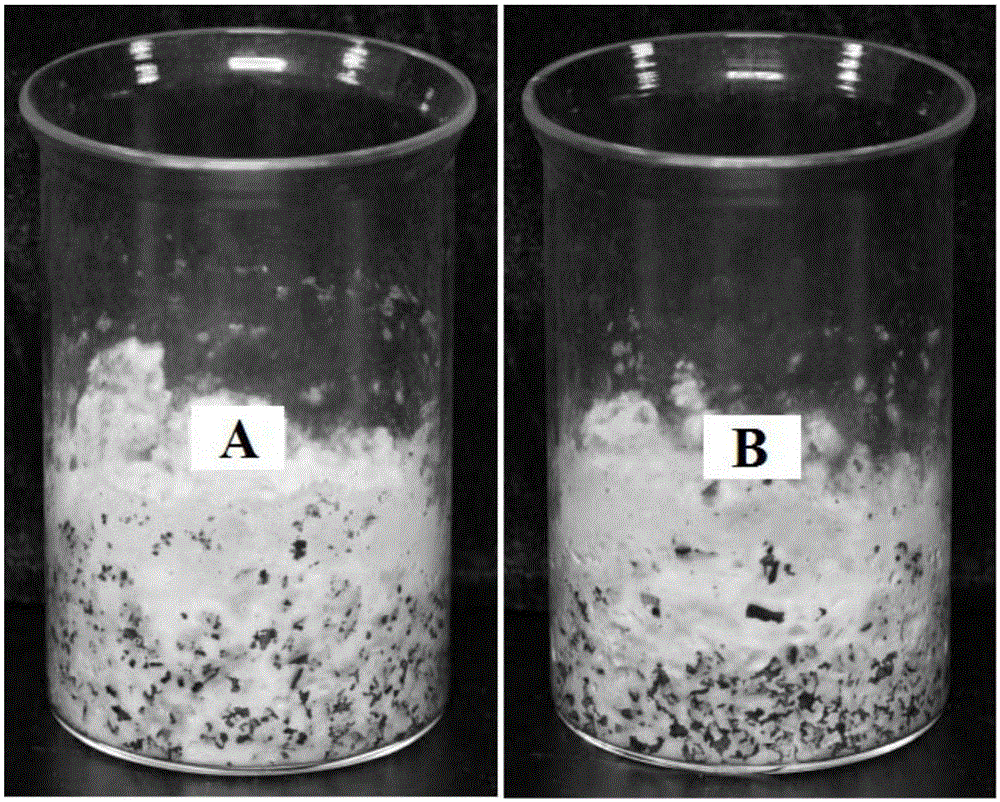Ceriporia lacerata strain and culture method and application thereof
A technology for tearing C. cereus and culture medium, which is applied in the field of C. tearing and its cultivation, can solve the problems of high preparation cost of bio-based materials and strict requirements for cultivation conditions, and achieves the reduction of preparation cost and resistance to miscellaneous bacteria. powerful effect
- Summary
- Abstract
- Description
- Claims
- Application Information
AI Technical Summary
Problems solved by technology
Method used
Image
Examples
preparation Embodiment 1
[0046] The strains of the cereus sp. (preservation number: CGMCC No. 10485, hereinafter referred to as YY bacteria) were transferred into the slant of the Kerner flask, the culture medium was PDA medium, and cultured at 25° C. for 7 days to obtain the strains of the slant.
[0047] The slant strains were inserted into the primary seed liquid culture medium. The mass percentage formula of the culture medium was: 2% soluble starch, 0.6% dry corn steep liquor powder, 0.1% potassium dihydrogen phosphate, natural pH, and sterilized at 121°C for 20 minutes. Cultivation conditions: liquid volume is 150mL / 500mL baffle Erlenmeyer flask, inoculum size is about 3cm 2 The bacterial lawn is cultivated at 25° C. on a shaker at 150 rpm for 3-4 days to obtain a first-grade seed liquid.
[0048] The first-level seed liquid is connected to the second-level seed liquid medium, and the mass percentage formula of the medium is: cornstarch 6%, corn steep liquor dry powder 0.8%, potassium dihydrogen...
Embodiment 1
[0050] This example is used to illustrate the culture characteristics of the strains of the present invention.
[0051] (1) Culture (25° C., 150 rpm, 7 days) YY bacteria with sterilized and non-sterilized secondary seed liquid medium (composition as shown in Preparation Example 1) respectively, and YY bacteria can grow, as figure 2 as shown ( figure 2 A represents the form after culturing with sterilized liquid medium, figure 2 B represents the morphology after culturing with non-sterile liquid medium). There is no obvious difference between the shape of the mycelium mass cultured in non-sterilized liquid medium and the sterilized medium, there are milky white bacterial circles above the liquid surface, no signs of bacterial contamination, and the smell of the fermentation broth and sterilization conditions The cultured YY bacteria were the same. It shows that YY bacteria has the characteristics of fast growth and strong resistance to miscellaneous bacteria.
[0052] (2...
Embodiment 2
[0056] This example is used to illustrate the application of the bacterial strain of the present invention in the preparation of degradable materials.
[0057]The seed liquid obtained in Preparation Example 1 and the non-sterilized medium (the mass percent of the medium composition is: soybean stem (with a particle diameter within the scope of 0.1-15 mm, and a particle diameter of soybean stem and particle diameter below 2 mm) The weight ratio of soybean stalks above 2mm is 1:1)99%, gypsum 1%) mixed, the inoculum size is 4g / kg culture medium, open culture is carried out at 25°C, and the relative humidity of the culture environment is 85%: Pre-cultivate for 3 days to make the mycelium fully grow in the culture medium. After the pre-cultivation, the cultured materials are scattered and placed in the mold for 5 days of in-mold culture. After the mycelium is covered with the culture medium, the mold is demoulded. Cultured outside the mold for 2 days. Dry at 55°C for 10 hours to o...
PUM
| Property | Measurement | Unit |
|---|---|---|
| Particle size | aaaaa | aaaaa |
| Particle size | aaaaa | aaaaa |
| Particle size | aaaaa | aaaaa |
Abstract
Description
Claims
Application Information
 Login to View More
Login to View More - R&D
- Intellectual Property
- Life Sciences
- Materials
- Tech Scout
- Unparalleled Data Quality
- Higher Quality Content
- 60% Fewer Hallucinations
Browse by: Latest US Patents, China's latest patents, Technical Efficacy Thesaurus, Application Domain, Technology Topic, Popular Technical Reports.
© 2025 PatSnap. All rights reserved.Legal|Privacy policy|Modern Slavery Act Transparency Statement|Sitemap|About US| Contact US: help@patsnap.com



